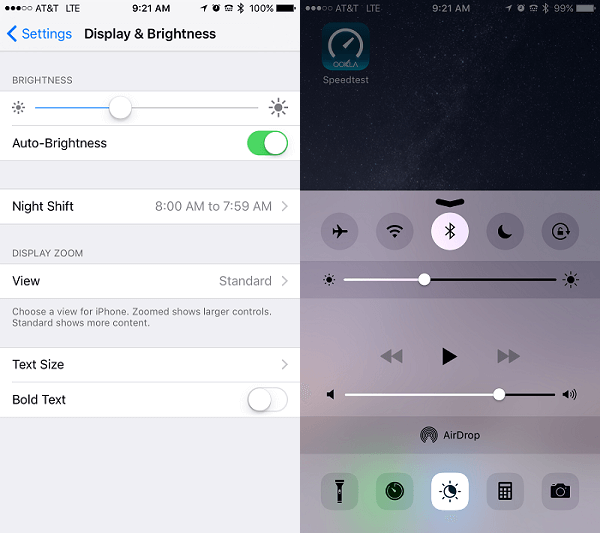March 26th, 2016
By now you’ve probably heard the term ‘blue light’ on the news or read about it in a technology article online, but did you know it can have an adverse effect on your eyes? Let’s take a look at exactly what blue light is, why it can have an adverse effect on your eyes, and what you can do to protect your eyes.
To better understand its negative effect on our eyes, we should first examine what blue light is. What we perceive as light is essentially electromagnetic radiation; things like infrared, microwave, UV-radiation, X-rays are all electromagnetic radiation. Electromagnetic radiation travels in different wavelengths; shorter wavelengths emit higher amounts of energy, and longer wavelengths emit less energy.

The human eye is only able to perceive a specific range on the spectrum of electromagnetic wavelengths, known as visible light. The light we perceive in the visible region of the spectrum is represented by different colors and is broken down into categories based on wavelengths: violet, indigo, blue, green, yellow, orange, and red. The red end of the spectrum is lower energy (longer wavelengths) and the violet/blue end of the spectrum is higher energy (shorter wavelengths), hence more harmful to our eyes.
Smartphones, computers, and mobile devices these days emit light on the blue end of the spectrum, and these higher energy wavelengths are potentially damaging to our eyes. Blue light could be damaging to the lens and retina similar in the way that ultraviolet (UV) light is harmful to our eyes. If you look at the chart above, UV light is right next to the blue end of the visible light spectrum that our eyes can detect. It is a well known fact that wavelengths in the ultraviolet spectrum are harmful to our eyes, causing cataracts and damaging the retina. Researchers are currently studying to what extent blue light in the visible light spectrum could damage our eyes.
In the meantime, there are things we can do to protect us from blue light. There are specific coatings for glasses that can filter out blue light, and both Android and Apple devices offer paid apps for blue light filter. With the release of iOS 9.3 on March 21, 2016, all iPhones and iPads now have the option to turn on a built-in blue light filter. Because there are studies that show blue light also disrupts our normal sleep pattern, Apple named this filter “Night Shift” and is marketing it to be used at night to get a better night’s sleep. In reality, it is a blue light filter, and can be used full time to decrease the amount of blue light you are exposed to.
If you haven’t installed this iOS update. Go to Settings –> General –> Software Update. Once you’re up to date with your software, go to Settings –> Display & Brightness –> Night Shift to access its settings. You can also swipe up to bring up Control Center and turn on Night Shift with the touch of a button.

If you have any trouble enabling this feature or have any additional questions about blue light and what you can do to protect your eyes, Dr. Bracken and Dr. Chen would be more than happy to help you at your next eye exam.